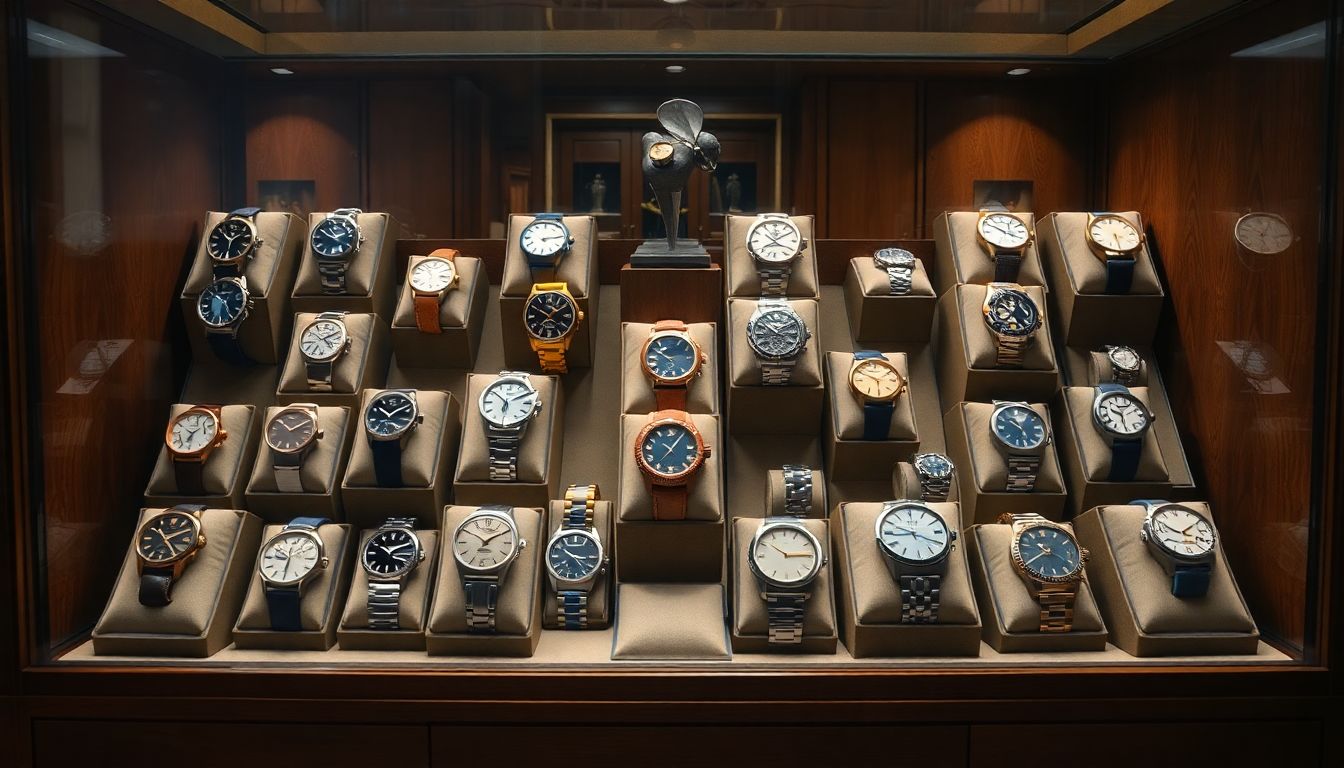
Imagine the moment you received your first luxury watch. Remember the thrill? That special connection doesn’t fade over time, but it requires work to keep it strong. Maintaining your watches is not just about cleaning; it’s about ensuring they stay functional, valuable, and cherished for years to come.
Proper watch maintenance not only enhances the longevity of your collection but also plays a significant role in its resale value. This ultimate guide will walk you through essential tips for cleaning, storing, and servicing your timepieces, ensuring they remain in top-notch condition.
Cleaning Your Watches: A Step-by-Step Guide
Essential Cleaning Supplies and Tools
To effectively clean your watches, gather these essential items:
- Microfiber cloths: Soft and non-abrasive, perfect for daily wipes.
- Watch cleaning solution: Look for products specifically designed for watches to avoid damage.
- Soft brushes: Ideal for brushing away dirt and grime, especially in crevices.
- Watch loupe: Helps inspect details closely.
Recommended Products: Microfiber Cloth, Watch Cleaning Solution, Soft Brush Set.
Cleaning Different Watch Materials
Different materials require specific care:
- Stainless Steel: Use a microfiber cloth with a cleaning solution. Gently scrub with a soft brush if needed.
- Leather Straps: Wipe with a damp cloth. Avoid soaking to prevent damage.
- Precious Metals: Consult a professional before cleaning to avoid scratches.
- Titanium: Similar to stainless steel, but be cautious of harsh chemicals.
Addressing Specific Issues
Common problems can arise, such as:
- Water Stains: Use a microfiber cloth dampened with a bit of lukewarm water.
- Scratches: For minor scratches on metal, consider using a polishing cloth designed for that purpose.
Real-world success: Many collectors have restored their treasured watches just by following these simple cleaning steps.
Proper Storage for Optimal Preservation
The Importance of a Watch Winder
For automatic watches, using a watch winder is crucial. Nearly 70% of mechanical watch malfunctions stem from inactivity. A winder ensures that your automatics stay fully wound and ready to wear.
Environmental Considerations
Consider the storage environment:
- Temperature: Avoid extreme heat or cold, as this can damage internal components.
- Humidity: Keep humidity low to prevent moisture damage.
- Light: Store watches away from prolonged sunlight to prevent fading or discoloration.
Storage Cases and Boxes
Invest in quality storage solutions. Consider:
- Single watch cases: Perfect for individual pieces.
- Travel rolls: Great for on-the-go storage.
- Display cases: Ideal for showcasing your collection while protecting it.
Recommended Storage Options: Single Watch Case, Travel Roll, Display Case.
Understanding and Performing Basic Watch Maintenance
Regular Inspections
Check your watches every month. Look for signs of wear or malfunction like:
- Misalignment
- Stopped movement
- Water damage
Battery Replacement
To safely replace a watch battery:
- Open the case back using appropriate tools.
- Remove the old battery and replace it with a new one, ensuring correct orientation.
- Close the case securely.
Safety Tip: Always handle batteries carefully; wear gloves if possible.
Lubrication and Servicing
Mechanical watches need professional servicing every 3 to 5 years. Lubrication keeps gears running smoothly and prevents wear.
Dealing with Repairs and Servicing
Identifying the Need for Repair
Be alert for signs like:
- Timekeeping issues
- Unresponsive features
- Unusual noises
Choosing a Reputable Watchmaker
Find a qualified watchmaker by checking reviews and asking for recommendations. Look for:
- Authorized service centers
- Certifications or training in watch repair
Expert Insight: Professional watchmakers often stress the importance of regular maintenance to prevent costly repairs later on.
Understanding Repair Costs
Repair prices can vary widely based on:
- The type and brand of the watch
- The nature of the issue
- Service complexity
Protecting Your Investment: Insurance and Documentation
The Importance of Insurance
Insuring valuable watches is essential. Watch theft and damage claims have surged, with estimates showing 25% of luxury watch owners experiencing some form of loss.
Maintaining Proper Documentation
Keep records of:
- Original purchase receipts
- Service history
- Appraisals
This documentation not only helps in claims but also adds value when selling.
Building a Watch Collection Inventory
Effectively catalog your collection by:
- Listing each watch with details such as model, serial number, and condition.
- Using a spreadsheet or app for easy tracking.
Conclusion: Preserving Your Legacy
Proper maintenance is key to enjoying your watch collection for years. Regular cleaning, appropriate storage, basic repairs, and insurance are vital steps to protect your investment.
By implementing these tips, you can ensure your timepieces not only remain functional but also retain their emotional and financial value. Start preserving your collection today and enjoy the legacy of your cherished watches.



